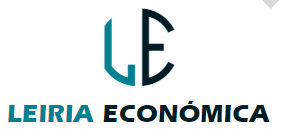Some women are at high or very high risk of developing breast cancer. They must then benefit from specific monitoring and screening. What are these risk factors?
Nearly 60,000 cases of breast cancer are diagnosed in France every year. Among the risk factors for breast cancer, some of them classify women as “high risk.”
Mutation in the BRCA 1 and BRCA 2 genes
Of all breast cancer cases diagnosed in France, between 5 and 10% are of hereditary origin. It is estimated that approximately 2 in 1,000 women carry a mutation in one or another breast cancer.
Before the age of 30, surveillance consists of an annual clinical breast examination. An imaging examination may be started if the woman has a family history. Starting at the age of 30, it is recommended that MRI and mammography be performed annually, alternating with annual clinical examination so that monitoring is semi-annual.
From the age of 30, a bilateral mastectomy may be offered. This preventive mastectomy may be performed later during follow-up. “Prophylactic mastectomy significantly reduces the risk of developing breast cancer: after this intervention, the residual risk of developing breast cancer is very low, less than 5% over the course of a lifetime, because sometimes the intervention does not make it possible to completely remove the breast tissue,” Determines Gustave Roussy Cancer Center (Veljuif). Breast control is therefore maintained but greatly reduced.
A history of breast cancer or ductal or lobular carcinoma in situ
If a woman has breast cancer or ductal carcinoma in situ (spread of cancer cells within the duct), a clinical examination should be performed every 6 months for 2 years after the end of treatment and then every years. Single or bilateral mammograms should also be performed annually. It can be supplemented with ultrasound.
Atypical ductal or lobular hyperplasia
In case of a history of atypical ductal or lobular hyperplasia (proliferation of cells) or lobular carcinoma in situ, surveillance consists of annual mammograms for 10 years, with the possibility of correlating with ultrasound. If at the end of this period the woman is 50 years or older, she is encouraged to participate in a structured screening programme. If the patient is under 50 years of age, a mammogram with possible ultrasound correlation will be performed every two years until the age of 50 years. You will then be able to join a structured screening programme.
High dose medical chest irradiation
If there is a history of high-dose medical chest irradiation (in the treatment of Hodgkin's disease), it is recommended to perform a clinical examination and MRI every year, starting 8 years after the end of treatment (as soon as possible). 20 years for clinical examination and 30 years for MRI). In addition, the Supreme Authority for Health recommends annual mammograms and ultrasounds.
Family history of breast cancer
Studies indicate that the risk of breast cancer increases when a first-degree relative (mother, sister, daughter) develops breast cancer, especially if the diagnosis is made at an early age (before menopause). HAS recommends specific screening when women age 20 or older have a family history and an Isinger score greater than or equal to 3, even if there is no BRCA 1 or BRCA 2 gene mutation in the family.
The Eisinger score is a family pedigree analysis score used to validate a genetic counseling indication. It makes it possible to classify the risk of genetic predisposition to breast cancer in the absence of a specific family mutation. This can be high or very high.
note : In its most recent publication on risk-based breast cancer screening methods, the National Cancer Institute lists a history of endometrial and uterine cancers as high risk.
